| |
I finish work early on Friday afternoons, during the time that Matthew has a break between classes. We've developed a little ritual ¡½ going over to the snack shop in the mall and buying a couple of taiyaki. 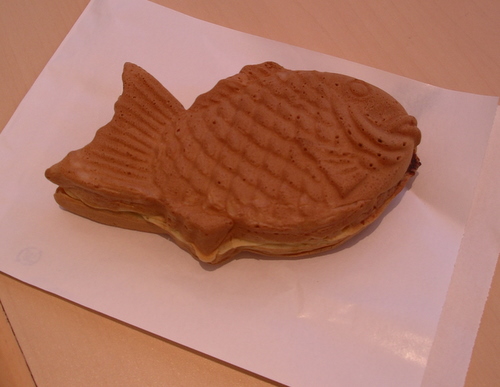 Taiyaki Taiyaki are filled, baked treats in the shape of a sea bream. They often have a sweet filling, like anko (red bean paste) or pastry cream, although some have savory fillings like sausage and cheese. Today's taiyaki were filled with anko and cream cheese.
Festival of the Seven Herbs
Traditionally, January 7 is a significant day in Japan. According to Shinto custom, adopted from ancient Chinese custom, January 7 is jinjitsu (person's day), a day when criminals are spared from punishment. More applicable to the general population, January 7 is also the day of nanakusa no sekku, the Festival of the Seven Herbs. People celebrate nanakusa no sekku by eating nanakusa gayu, rice porridge with seven herbs. It is believed that eating the seven herbs on this day will bring good health and longevity in the upcoming year. It is also believed that eating a light meal of rice porridge and herbs will help settle stomachs troubled by six days of indulging in sake, beer, and osechi ryouri. There are seven herbs traditionally used in nanakusa gayu, although it seems that what actually gets used depends on what's available in each region. You can buy the traditional seven in packaged sets.  Clockwise from left, the seven herbs are hakobera (chickweed), suzushiro (daikon radish), gogyou (cudweed), nazuna (shepherd's purse), seri (water dropwort, or Japanese parsley), suzuna (turnip), and hotokenoza (nipplewort). We followed the recipe on the package and put toasted mochi in ours, in addition to the herbs. 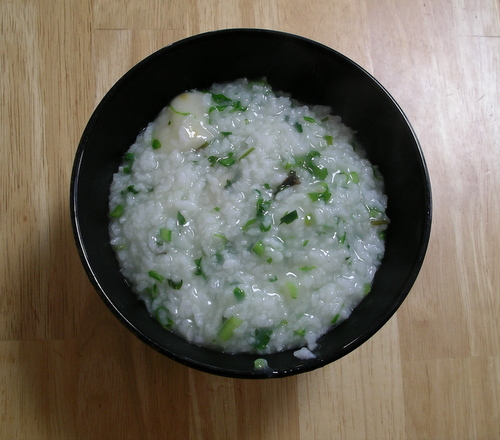
The new year dawned with spectacular weather, which some people have taken as an auspicious sign for the year. 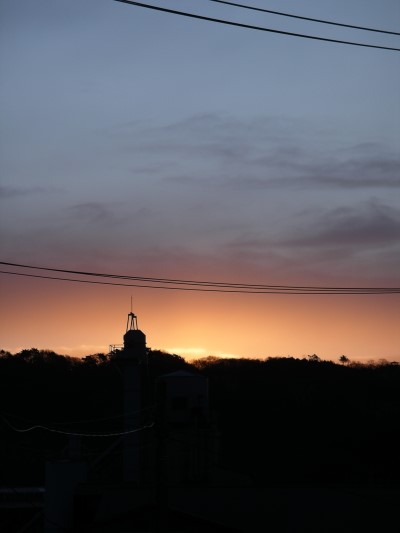 We weren't actually up at dawn on New Year's Day, so this photo is from the second. But the weather was gorgeous both days, so we expect New Year's Dawn probably looked a lot like this.
A couple of weeks ago, we visited the local model shop. Usually when we drop by, the owner's wife sets out tea and coffee and we visit for a bit after Matthew's done his shopping. This time, she showed me a holiday edition of a Japanese cooking magazine, which got us to talking about apple pie. She apparently had a pie crust in her freezer, which she tried to give me. I had to refuse, citing our lack of an oven. Matthew had told them that he'd be back in a few days with a visiting train buddy. She likes to give us things, so I wondered whether a pie would be forthcoming. Sure enough, when Matthew went back on Monday, he received a pie. A Japanese apple pie, that is. 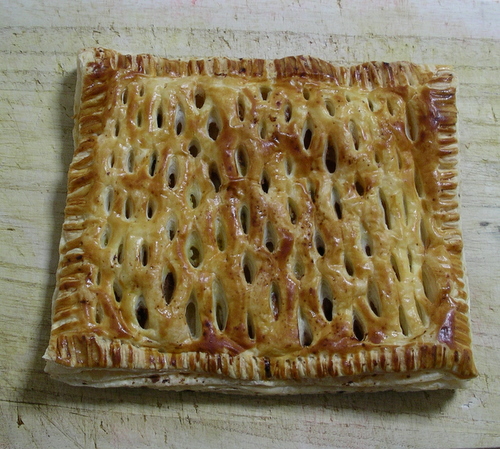
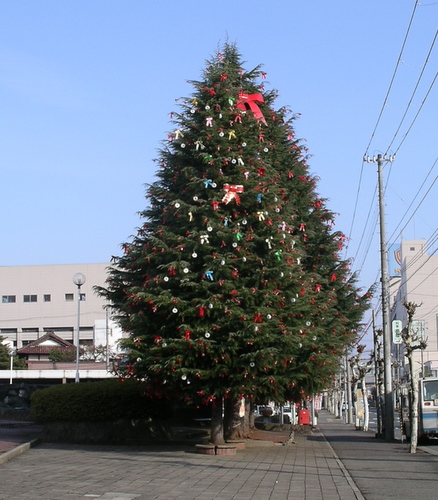 The trees in front of the Kitakami city office, all dressed up for Christmas. The name of the decoration scheme is "Ribbon Showers."
You Know You're In a Big City When. . .
. . . there's at least one giant TV mounted on a building downtown. 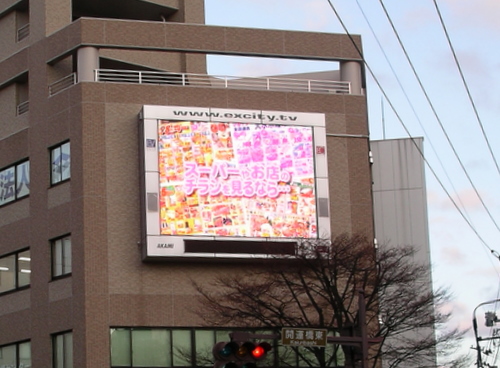 This is Morioka's giant TV. Kitakami, alas, isn't big enough for one.
Sun-drying persimmons are a common sight around Japan in the fall. 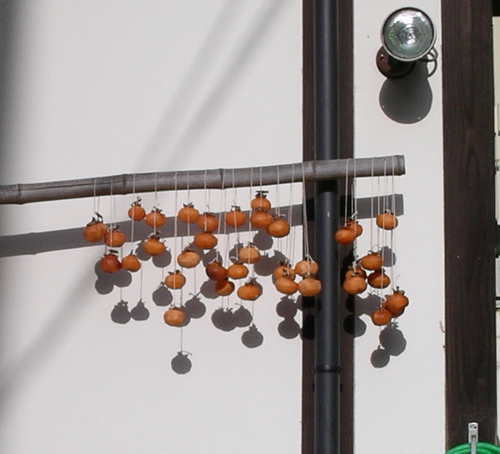 People hang the persimmons from a pole for a couple of weeks, until they shrivel and darken. They then store the dried persimmons, called hoshigaki, for snacking on during the winter.
Winter has already arrived in Kitakami, which means it's time to start making nabe. Nabe is the Japanese word for cooking pot; the term is also applied to various one-pot dishes like soups, stews, or sukiyaki. One of our favorite nabe comes from Akita Prefecture: kiritanpo nabe. 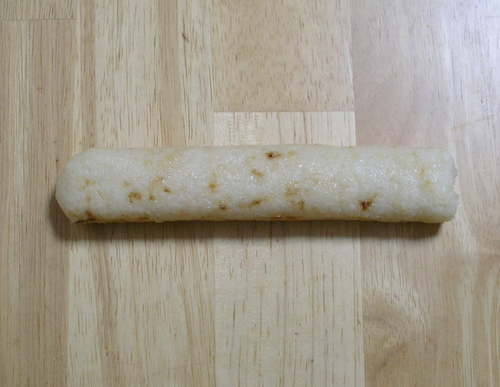 Kiritanpo Kiritanpo is made by mashing cooked rice into a paste, then shaping the paste around a stick and grilling it. Because they get soft rather quickly, they're added to the nabe toward the end of cooking. 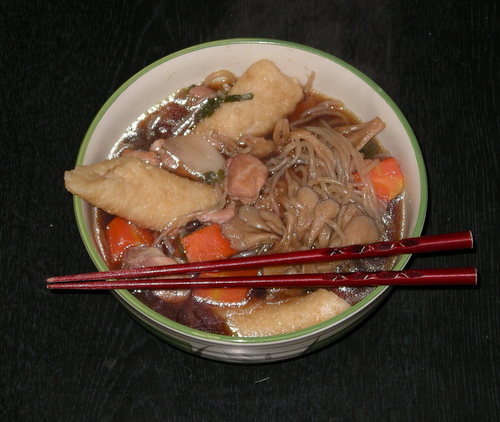 Chicken thigh, shirataki (noodles made of devil's tongue jelly), maitake mushrooms, carrots, and seri (Japanese parsley) rounded out the nabe. It was the perfect dish for a frigid, rainy night. ¡¡
When you get damaged or misdirected mail in America, it usually arrives with some sort of brief explanation. Often, the explanation is an impersonal form with one of multiple preprinted reasons checked off (or the ever-popular "Other," with a terse, often illegible explanation). It might also say "We apologize for any inconvenience," or something like that. It's all very cold and official. Not so in Japan: 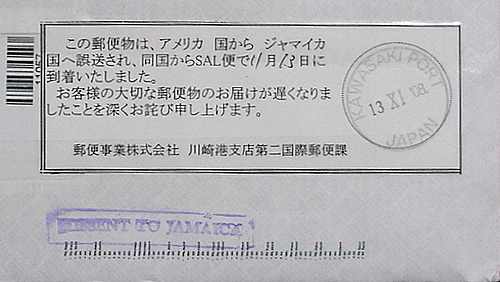 This came on a piece of mail we'd been expecting to arrive from America last month. It says, essentially: "This mail was sent from America to Jamaica, then arrived in Japan on November 13. The honorable customer's important mail was delivered late, and for that, we offer our deepest apologies." Interestingly, it seems that mail from America bound for Japan gets sent to Jamaica often enough to warrant preprinted labels with spaces to write in the date.
Back Next
|
|



 Calendar
Calendar




